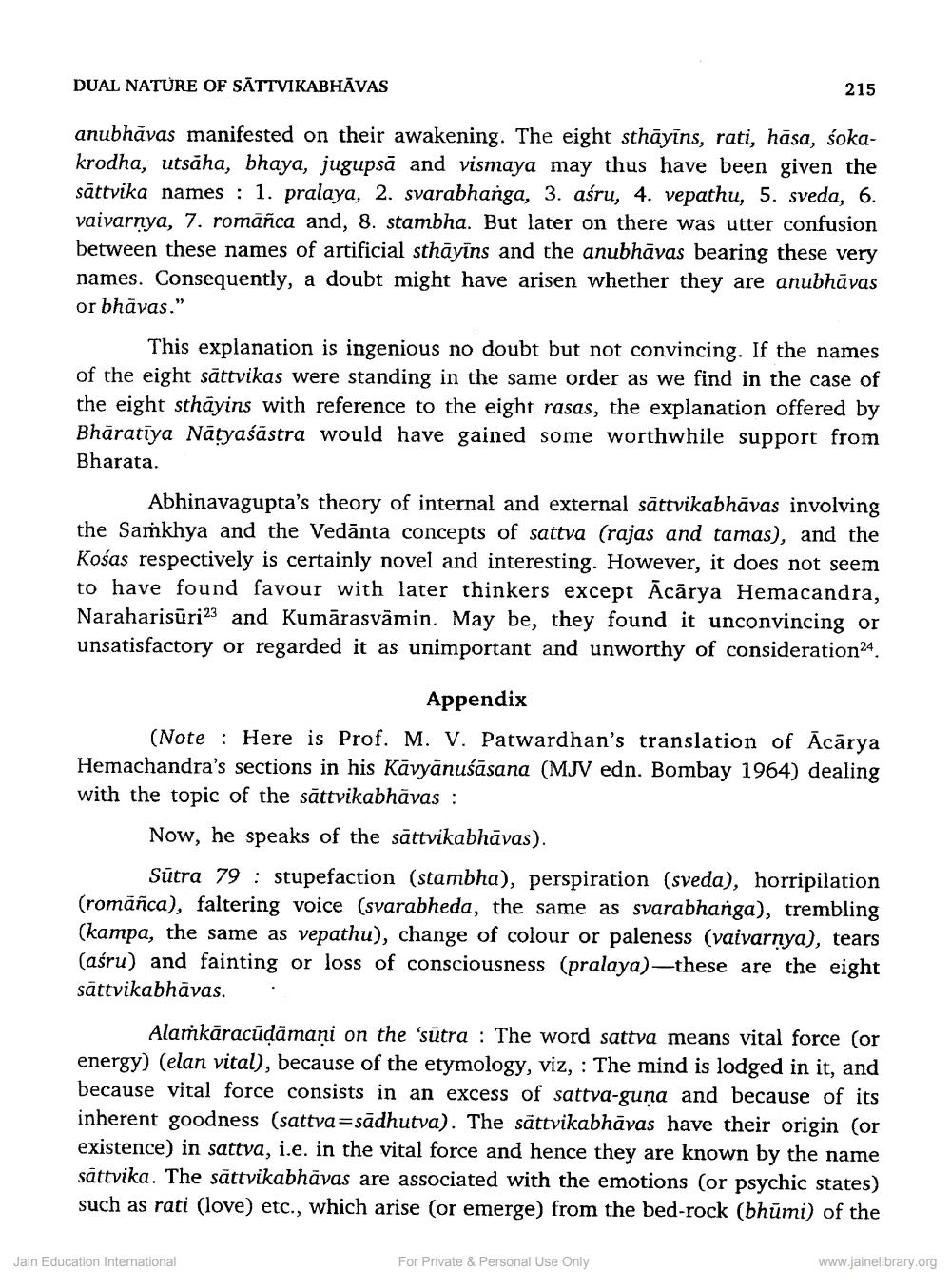________________ DUAL NATURE OF SATTVIKABHAVAS 215 anubhavas manifested on their awakening. The eight sthayins, rati, hasa, sokakrodha, utsaha, bhaya, jugupsa and vismaya may thus have been given the sattvika names : 1. pralaya, 2. svarabhanga, 3. asru, 4. vepathu, 5. sveda, 6. vaivarnya, 7. romanca and, 8. stambha. But later on there was utter confusion between these names of artificial sthayins and the anubhavas bearing these very names. Consequently, a doubt might have arisen whether they are anubhavas or bhavas." This explanation is ingenious no doubt but not convincing. If the names of the eight sattvikas were standing in the same order as we find in the case of the eight sthayins with reference to the eight rasas, the explanation offered by Bharatiya Natyasastra would have gained some worthwhile support from Bharata. Abhinavagupta's theory of internal and external sattvikabhavas involving the Samkhya and the Vedanta concepts of sattva (rajas and tamas), and the Kosas respectively is certainly novel and interesting. However, it does not seem to have found favour with later thinkers except Acarya Hemacandra, Naraharisuri23 and Kumarasvamin. May be, they found it unconvincing or unsatisfactory or regarded it as unimportant and unworthy of consideration24. Appendix (Note : Here is Prof. M. V. Patwardhan's translation of Acarya Hemachandra's sections in his Kavyanusasana (MJV edn. Bombay 1964) dealing with the topic of the sattvikabhavas : Now, he speaks of the sattvikabhavas). Sutra 79 : stupefaction (stambha), perspiration (sveda), horripilation (romanca), faltering voice (svarabheda, the same as svarabhanga), trembling (kampa, the same as vepathu), change of colour or paleness (vaivarnya), tears (asru) and fainting or loss of consciousness (pralaya)--these are the eight sattvikabhavas. Alamkaracudamani on the 'sutra : The word sattva means vital force (or energy) (elan vital), because of the etymology, viz, : The mind is lodged in it, and because vital force consists in an excess of sattva-guna and because of its inherent goodness (sattva=sadhutva). The sattvikabhavas have their origin (or existence) in sattva, i.e. in the vital force and hence they are known by the name sattvika. The sattvikabhavas are associated with the emotions (or psychic states) such as rati (love) etc., which arise (or emerge) from the bed-rock (bhumi) of the Jain Education International For Private & Personal Use Only www.jainelibrary.org




